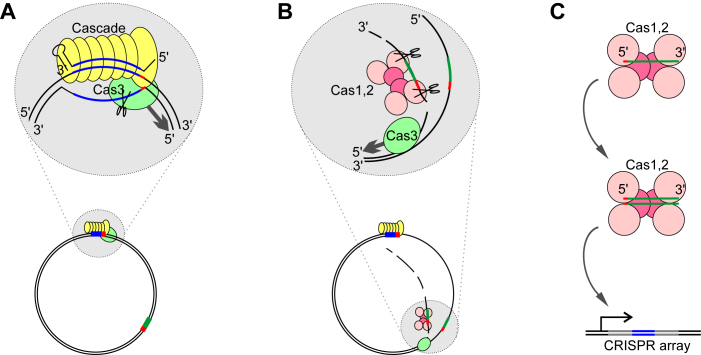Figure 6.
A model of primed adaptation by the E. coli Type I-E CRISPR–Cas system. (A) The priming protospacer is recognized by the effector complex, leading to R-loop formation. (B) Cas3 processively unwinds and degrades the DNA strand non-targeted by the priming complex leading to formation of extended single-stranded fragments. The Cas1–Cas2 complex excises protospacers from fragments generated by Cas3. The Cas1–Cas2 complex may (as suggested by the in vitro findings of Redding et al., 2015) or may not associate with Cas3. (C) The Cas1–Cas2 complex, first bound to non-double-stranded protospacers, is converted to adaptation-proficient complex with fully or partially double-stranded protospacers that are inserted in the CRISPR array.

